EWB-UK Research Conference 2009Hosted by The Royal Academy <strong>of</strong> EngineeringFebruary 20Developing new <strong>training</strong> techniquesA research project carried out by WEDC has developed a way <strong>of</strong> <strong>training</strong> <strong>engineers</strong> at work, thatfocuses on what <strong>engineers</strong> think <strong>about</strong>, not <strong>the</strong> social science. Mainstreaming <strong>gender</strong> does notmean that <strong>engineers</strong> become social scientists, but that <strong>the</strong> technical activities are carried out withan awareness <strong>of</strong> social science issues. Engineers are still primarily responsible for technical activitiesand social scientists for community work, but working toge<strong>the</strong>r to a common goal. Consider such adelicate matter as <strong>the</strong> disposal <strong>of</strong> sanitary towels during menstruation; <strong>the</strong> disposal <strong>of</strong> <strong>the</strong> waste istechnical (requiring engineering skills), but <strong>the</strong> subject area is very difficult to discuss with <strong>the</strong> users(requiring social skills).The research methodologyThe project started <strong>of</strong>f with a conventional <strong>training</strong> programme; this focused on <strong>the</strong> social sciencera<strong>the</strong>r than engineering issues. Problems occurred though with attracting <strong>engineers</strong> to attend <strong>the</strong>programme. One workshop that did engage with technical staff showed that, whilst <strong>the</strong> <strong>engineers</strong>were aware <strong>of</strong> <strong>gender</strong> issues, <strong>the</strong>y did not have <strong>the</strong> technical responses required. A case was given<strong>of</strong> a project where a woman had been appointed caretaker <strong>of</strong> a water system, but she was unable toclimb <strong>the</strong> water tower to maintain it as she wore a sari (long dress). The problem was a technicalone, as <strong>the</strong> <strong>engineers</strong> did not know how to re-design <strong>the</strong> water tower to suit <strong>the</strong> user. The focusshifted from looking at “<strong>gender</strong>” activities to looking at what <strong>engineers</strong> do in <strong>the</strong>ir day-to-day job.Following this workshop, a series <strong>of</strong> courses were held with a range <strong>of</strong> technical staff, to test a newapproach to <strong>training</strong> <strong>engineers</strong> <strong>about</strong> <strong>gender</strong>, using lots <strong>of</strong> discussion with <strong>the</strong> participants to seewhat <strong>the</strong>ir views were. In one case, discussing <strong>the</strong> issues with managers from Nigerian waterutilities, <strong>the</strong> rights based approach was welcomed by <strong>the</strong> women on <strong>the</strong> course, but was treatedwith opposition by <strong>the</strong> male participants. A pragmatic, customer based approach however, whilstnot as emotive, was accepted by all as a positive way forward.The <strong>training</strong> methodologyThe <strong>training</strong> developed has some underlying principles that make this approach different fromstandard <strong>gender</strong> courses.Reasons for considering womenThe rights-based approach did not appear to be relevant to <strong>the</strong> work <strong>engineers</strong> carried out, so <strong>the</strong>reasons for considering <strong>the</strong> needs <strong>of</strong> women are based around meeting customers’ needs, projectefficiency and effectiveness. It was important to capture <strong>the</strong> engineer’s imagination to make <strong>the</strong>mwant to take action. This is founded in one <strong>of</strong> <strong>the</strong> early definition <strong>of</strong> civil engineering, namely:‘<strong>the</strong> art <strong>of</strong> directing <strong>the</strong> great Sources <strong>of</strong> Power in Nature for <strong>the</strong> use and convenience <strong>of</strong> manCommunity <strong>of</strong> Practice: (water and sanitation)Author: Brian Reed and Sue CoatesInstitution: WEDC Loughborough UniversityPreviously published: 31st WEDC International Conference, Kampala, Uganda, 2005(Thomas Tredgold 1827)This is supported by research by Narayan (1995) that showed that participative projects were moresuccessful than non-participative projects. Research shows that women are consistently <strong>the</strong> maincollectors <strong>of</strong> water in non-commercial situations. Women are <strong>the</strong>refore required on decisionmakingcommittees, not to fill a quota, but to provide specific direction to <strong>the</strong> engineering process.The first step is getting <strong>the</strong>m on committees; <strong>the</strong> second step is <strong>engineers</strong> actually engaging with
EWB-UK Research Conference 2009Hosted by The Royal Academy <strong>of</strong> EngineeringFebruary 20<strong>the</strong>se groups representing <strong>the</strong> customer and discussing design decisions, such as technicalspecifications. Internationally agreed principles and national laws and polices are mentioned, butonly after explaining why <strong>the</strong>y have been developed – and rights based advocacy has a role here.Everybody experiences problems with having limited opportunities in life because <strong>the</strong>y are too old/young, rich/ poor, sick, from <strong>the</strong> “wrong” social, religious, cultural or ethnic background. Having haddirect experience <strong>of</strong> this, <strong>engineers</strong> can relate to <strong>the</strong> problems <strong>of</strong> power-relations in society and <strong>the</strong>idea <strong>of</strong> vulnerable or socially excluded groups. Vulnerable groups have less <strong>of</strong> an opportunity toinfluence public decisions but are still valid customers <strong>of</strong> public infrastructure services – indeed <strong>the</strong>yare <strong>of</strong>ten very reliant on <strong>the</strong>se services as <strong>the</strong>y do not have <strong>the</strong> resources to access adequate watersupplies (for example), on <strong>the</strong>ir own (i.e. richer people may be able to buy water).Social scientists need simple indicators to identify vulnerable groups; women and <strong>the</strong> poor areconsistently socially excluded in most societies and this makes social analysis efficient – in <strong>the</strong> sameway that <strong>engineers</strong> use simple indicators for soil conditions and rock types.The engineer’s roleAn engineer does not have <strong>the</strong> same job as a social scientist and <strong>the</strong> time-scale <strong>of</strong> a standardengineering intervention is not <strong>the</strong> same as that required for sustainable social change. Identifyingwhat <strong>the</strong> engineer feasibly can do is <strong>the</strong>refore important. Some <strong>of</strong> <strong>the</strong>se actions will be to supportsocial scientists, such as ensuring adequate representation <strong>of</strong> women, but <strong>the</strong> engineer’s main roleis in <strong>the</strong> provision <strong>of</strong> infrastructure.One example comes from a <strong>training</strong> session in Zambia, where experienced staff had been on <strong>gender</strong><strong>training</strong> courses over several years. They accepted that consulting with women and ensuringwomen were on committees was a regular aspect <strong>of</strong> providing a water supply. As part <strong>of</strong> <strong>the</strong>workshop, <strong>the</strong> participants drew up engineering specifications for a pit latrine, from <strong>the</strong> perspective<strong>of</strong>:• A hydrogeologist;• A health <strong>of</strong>ficial;• A building contractor;• A local political leader; and• A woman with a baby.All <strong>the</strong> specifications were different; when asked what <strong>the</strong>y used in practice, <strong>the</strong>y stated that <strong>the</strong>standard design was 20 years old and only reflected technical aspects – <strong>the</strong> needs <strong>of</strong> <strong>the</strong> user (which<strong>the</strong>y were aware <strong>of</strong> as <strong>the</strong>y had just written a specification reflecting <strong>the</strong>se) were not included in <strong>the</strong>design. A sound technical design such as a VIP did not specifically ensure <strong>the</strong> latrine was largeenough, had handholds where needed, was easy to clean and was light enough to see inside. The<strong>gender</strong> <strong>training</strong> <strong>the</strong>y had experienced had limited “<strong>gender</strong> responses” to social science activities andhad not included technical responses. The need to consult with women is not because <strong>the</strong> projectCommunity <strong>of</strong> Practice: (water and sanitation)Author: Brian Reed and Sue CoatesInstitution: WEDC Loughborough UniversityPreviously published: 31st WEDC International Conference, Kampala, Uganda, 2005



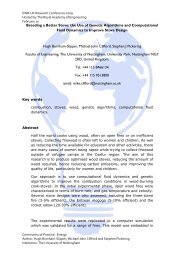

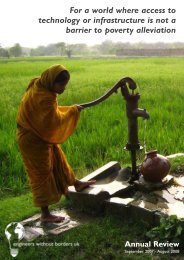
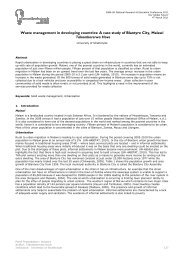
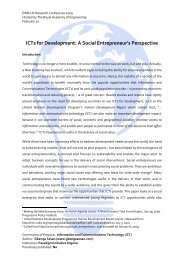
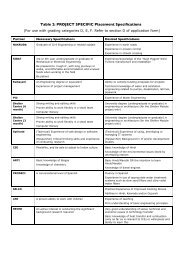


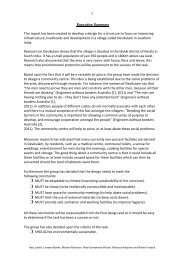


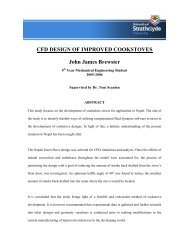
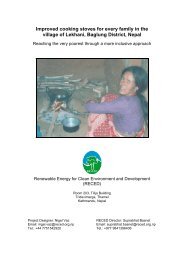
![Ethical Fundraising Guidance[1].pdf - Engineers Without Borders UK](https://img.yumpu.com/36288951/1/184x260/ethical-fundraising-guidance1pdf-engineers-without-borders-uk.jpg?quality=85)